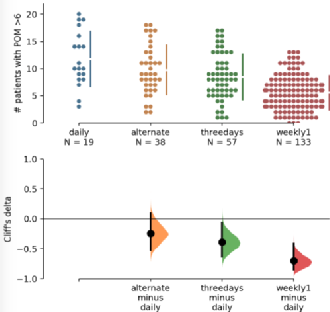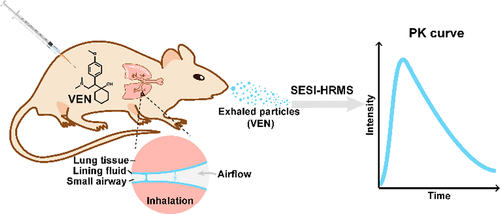Publications
A complete up-to-date list of publications of Robert can be found on Google Scholar and full-texts might be available from the Warwick Research Active Portal (WRAP).
#LittleTediousButReallyGreatResource
A monster rhythmic metabolome review by Tom Hancox, PhD student in Rick Warwick's lab (Liverpool) in collaboration with Tom's co-supervisors Debra Skene (Surrey) and Robert Dallmann. Paper now out in Metabolomics and giving an overview on circadian and diurnal metabolome studies in people.
Impact of assessment frequency of patient-reported outcomes: an observational study using an eHealth platform in cancer patients
 |
The evaluation of patient-reported outcomes (PRO) in cancer has proven relevant positive clinical impact on patients’ communication with healthcare professionals, decision-making for management, wellbeing and overall survival. However, the optimal frequency of PRO assessment has yet to be defined. Based on the assumption that more frequent sampling would enhance accuracy, we aimed at identifying the optimal sampling frequency that does not miss clinically relevant insight. Our analysis suggests that in patients receiving chemotherapy for advanced cancer, increasing the density of PRO collection enhances the accuracy of PRO assessment to a clinically meaningful extent. This is valid for both computation of averages symptom burden and for the recognition of episodes of severe symptom intensity. |
Adenosine integrates light and sleep signalling for the regulation of circadian timing in mice
 |
Sleep pressure and circadian rhythms influence one another. However, the regulatory mechanisms are unclear. Here, the authors show that adenosine A1/A2A receptor antagonists, such as caffeine, shift circadian rhythms and enhance the effects of light, providing a molecular link between sleep pressure and circadian rhythm. |
First Preprint: Cell-type specific circadian bioluminescence rhythms recorded from Dbp reporter mice reveal circadian oscillator misalignment
 |
Circadian rhythms are endogenously generated physiological and molecular rhythms with a cycle length of about 24 h. Bioluminescent reporters have been exceptionally useful for studying circadian rhythms in numerous species. Here, we report development of a reporter mouse generated by modification of a widely expressed and highly rhythmic gene encoding D-site albumin promoter binding protein (Dbp). In this line of mice, firefly luciferase is expressed from the Dbp locus in a Cre-recombinase-dependent manner, allowing assessment of bioluminescence rhythms in specific cellular populations. A mouse line in which luciferase expression was Cre-independent was also generated. The Dbp reporter alleles do not alter Dbp gene expression rhythms in liver or circadian locomotor activity rhythms. In vitro and In vivo studies show the utility of the reporter alleles for monitoring rhythmicity. Our studies reveal cell-type specific characteristics of rhythms among neuronal populations within the suprachiasmatic nuclei in vitro. In vivo studies show stable Dbp-driven bioluminescence rhythms in the liver of Albumin-Cre;DbpKI/+ liver reporter mice. After a shift of the lighting schedule, locomotor activity achieved the proper phase relationship with the new lighting cycle more rapidly than hepatic bioluminescence did. As previously shown, restricting food access to the daytime altered the phase of hepatic rhythmicity. Our model allowed assessment of the rate of recovery from misalignment once animals were provided with food ad libitum. These studies provide clear evidence for circadian misalignment following environmental perturbations and reveal the utility of this model for minimally invasive, longitudinal monitoring of rhythmicity from specific mouse tissues. |
Online Real-Time Monitoring of Exhaled Breath Particles Reveals Unnoticed Transport of Non-Volatile Drugs from Blood to Breath
 |
Happy to be involved in this work from Xue (Amy) Li's lab at Jinan University, China, and colleagues from NTU Singapore and Basel. The project shows a further facete of breath as a matrix for metabolites, i.e., that even non-volatile compounds might be present. This could open further possibilities for the utility of breath biomarkers in the future. |
